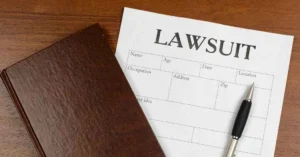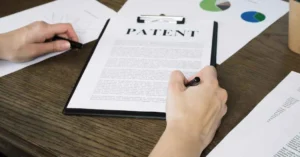Every country has different laws and legal systems, which might complicate and cost inventors’ patent applications. Still, the Patent Cooperation Treaty (PCT) simplifies this process and offers a less difficult path for worldwide patent protection.
Being a well-known intellectual property (IP) legal practice in Indonesia, we at Am Badar & Am Badar is aware of the challenges inventors in this field encounter. You might, for example, look at our insight on Addressing Patent Infringement in Indonesia.
Using our outstanding knowledge and abilities, we assist clients in safeguarding their ideas abroad so ensuring intellectual property protection all around. More than that, you can also check the insight and services page, or contact the team.
What is the Patent Cooperation Treaty (PCT)?
Basically, PCT is a global agreement designed to simplify the process of obtaining patent rights over several nations using a single application.
Under the World Intellectual Property Organization (WIPO), the PCT lets creators or innovators file consistent worldwide patent applications that can then be sought for protection in any one of the more than 155 country members.
Separating national or regional applications results in a lot of administrative effort and costs that this considerably reduces. Also, based on the procedures, Patent Cooperation Treaty runs in two main phases: the international phase and the local/national phase.
During the international phase, an applicant files one single patent application; thereafter, this is searched worldwide and first reviewed. This provides insightful information on the patentability of the innovation before we proceed with the national phase.
On the other hand, on a national level, national patent offices of several countries evaluate applications and then decide on patent grants or not.
The Core Functions of a Patent Cooperation Treaty (PCT)
Now, here are several crucial PCT activities that would benefit to both applicants as well as patent offices:
-
Simplified Filing Process
By allowing innovators to submit a single worldwide application, the PCT simplifies the patent application procedure and thereby saves important time and money.
Here, candidates can thus choose to send their application to WIPO or a national patent office straightforwardly. They have to pay one charge alone after meeting PCT formality criteria in one language.
-
International Search
During the PCT application process, the International Searching Authority (ISA) carefully searches current data during the PCT application process in order to find pertinent published patent documentation and technical literature.
This search offers a written assessment of the invention’s possible patentability, therefore offering applicants first awareness of the possibilities for getting a patent.
-
International Publication
After 18 months following the date of first filing, the information in the international application will be made available to the public.
This guarantees public awareness of the product, therefore drawing possible licensees or investors as well as deterring possible offenders.
How Does PCT Benefit Inventors?
Usually running 30 months from the original filing date, the international phase allows people to apply for patent approval in their designated countries. Every national or regional patent office examines the application in conformity with their own policies and rules.
In Indonesia, for example, the patent application procedures are handled by the Directorate General of Intellectual Property (DGIP). Still, what advantages does the Patent Cooperation Treaty offer for inventors?
All things considered, it gives creators seeking global patent protection many advantages, including:
-
Cost Efficiency
Generally speaking, one PCT worldwide request is often less expensive than multiple locally or regionally generated requests overall. This covers, for up to 30 months, delayed declines in legal fees, filing fees, and translating expenses.
-
Time Efficiency
Subsequently, the global search and preliminary evaluation will offer early hints about the possible patentability of an invention. This guides strategic changes to the application and helps artists make wise decisions regarding seeking patent protection in particular nations.
-
Global Recognition
Furthermore, as a worldwide agreement, every country that participates recognizes the Patent Cooperation Treaty applications, therefore offering a consistent basis for patent appraisal. This raises the possibility of getting patents in several spheres.
-
Strategic Business Decisions
Finally, the PCT process helps creators to fully investigate commercial prospects, get financial support, and evaluate the market viability of their ideas before committing any money to be used on a national level.
Key Considerations for Using a Patent Cooperation Treaty (PCT)
As you are considering the submission of a PCT, it is important to keep in mind specific factors and considerations that should not be overlooked:
-
Eligibility
An applicant for a PCT application must be either a resident or national of a participating country. For example, in Indonesia, nationals and residents are eligible to file PCT applications to ensure their innovations receive international protection.
-
Provisional Patents
A typical initial step is to file a preliminary patent application, which establishes a priority date. Within 12 months, creators/inventors can submit a PCT application, granting them the chance to give precedence to the provisional application. This method provides enough opportunities to improve and polish the output.
-
Compliance
PCT applications also have to meet specific formal standards for the filing date and assessment of formalities. Complying with these standards will help to avoid any possible application rejection or delays.
-
National Phase Entry
Following the international phase, inventors have to go local in every country they intend to protect their patent rights for. This means routinely translating the application into the local language, attending to national fees, and meeting local demands.
-
Costs and Fees
While the PCT process can assist in lowering specific costs, inventors should be prepared for the expenses associated with national phase entries. Setting aside resources for these costs is crucial to maintain the protection of the advancement in significant markets.
More than the five factors discussed above, developing a well-considered patent strategy is the key to maximizing the PCT’s benefits. This directly relates to IP specialists like Am Badar & Am Badar.
One of our focuses at Am Badar & Am Badar is providing whole patent services for Indonesian and beyond businesses and inventors. Our team of experts is dedicated to helping you safeguard your creative resources, overcoming legal obstacles, and achieving your business goals.
For more information on our Patent Service, kindly refer to our services page. You can also arrange a consultation about the Patent Cooperation Treaty through our contact page. For further information, visit the insights page. One of the recommended articles for you to read is Patent Pooling.
References
- https://www.wipo.int/pct
- https://www.wipo.int/pct/en/faqs/faqs.html
- https://www.aseanip.org/services/patent-cooperation-treaty-(pct)
- https://jurnal.dpr.go.id/index.php/hukum/article/view/1071
- https://peraturan.bpk.go.id/Download/26633/UU%20Nomor%2014%20tahun%202001.pdf
Reviewed by Nabil Argya Yusuf






